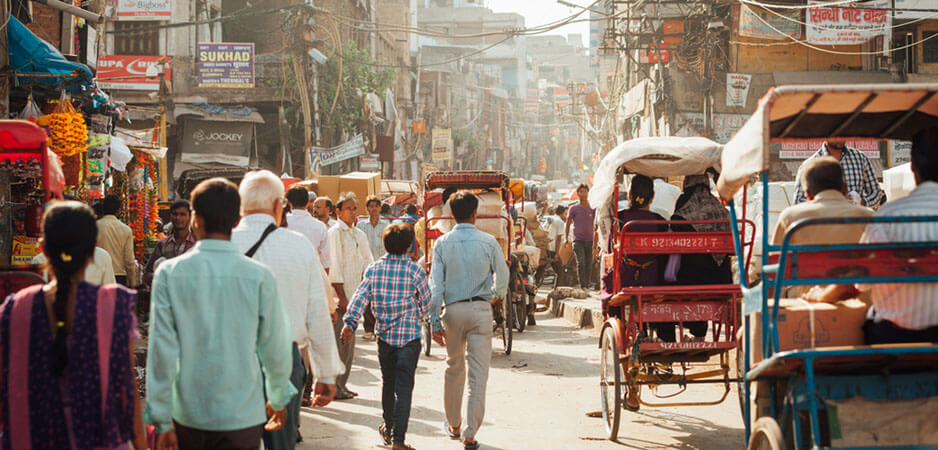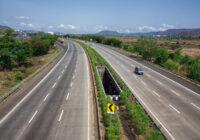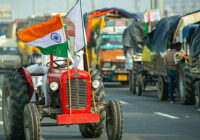India sees growing uncertainty as the rupee is failing and confidence in Modi’s government waning.
Ruling parties tend to be optimistic and point to the silver lining whenever a looming crisis appears on the horizon. Al Jazeera describes the continuing weakness of the Indian rupee and what it may mean for the nation’s economy. While most observers fear the worst, “India’s ruling Bharatiya Janata Party [BJP] acknowledges that the currency’s fall is a matter of concern but dismisses doomsayers’ predictions for the economy,” Al Jazeera reports.
Here is today’s 3D definition:
Doomsayer:
The name governments and established institutions under threat prefer to give to truth tellers, who violate the rule of compulsory optimism
Contextual note
To measure the strength of a currency, it must be compared to something else. The common standard is the principal reserve currency, the dollar. Proving that everything is a matter of perspective, BJP spokesperson Zafar Islam offered this bit of wisdom: “Rupee is not weakening, rather it is the dollar strengthening against all other currencies.” But the rupee’s gains with regard to other currencies have been short term. The rupee’s fall against the dollar has lasted longer, goes deeper and, according to India economist Shilan Shah, “the rupee’s slide will continue into 2019.”
On August 31, CNN Money reported that “India’s economy is racing ahead, shrugging off global trade tensions and a sharp fall in its currency.” Even at the rate of 8.2% for the second quarter, India has a long way to go to join the peloton of power economies and shake off its current dependence on the US.
Even as the economy grows, the economic health of the nation appears to be lagging. Analyzing four years of BJP leadership, The Diplomat praises Prime Minister Narendra Modi for his accomplishments, particularly his “overhaul of the nation’s indirect taxation system through the goods and services tax (GST)… a crucial step in improving ease of business and removing trade barriers.” But it adds this severe judgment, which will undoubtedly affect the 2019 election: “[P]erhaps the biggest promise made by the BJP in 2014 — job creation — remains unfulfilled.”
Historical note
Historically, Jawaharlal Nehru’s India after independence played on the Cold War rivalry between the US and the Soviet Union to define its place in the modern world, shying away from alignment to avoid direct dependency. As global power relations have been shifting over the past decade, rapprochement with the US has been in the air.
Barack Obama and now Donald Trump have jumped on the opportunity to tighten the relationship, as did Modi himself, free from the constraints of the Indian National Congress party’s past. But given the difference in the weight of their economies, Modi should have understood that India was at risk of becoming a hostage to the US, with an ever-decreasing margin of maneuver. And Trump is a firm believer in reducing other nations’ margin of maneuver.
 India’s population at more than 1.32 billion — as of 2016 — represents around 17% of the world’s population. But it is only the world’s seventh largest economy, just behind France (67 million people) and followed by Italy (60 million). The International Monetary Fund estimates the value of China’s economy at $14 trillion and India’s at $2.85 trillion
India’s population at more than 1.32 billion — as of 2016 — represents around 17% of the world’s population. But it is only the world’s seventh largest economy, just behind France (67 million people) and followed by Italy (60 million). The International Monetary Fund estimates the value of China’s economy at $14 trillion and India’s at $2.85 trillion
In 2013, the German magazine Manager offered this assessment of India’s potential: “India is a country where merit and integrity have no value and the country continues to sink beneath the suffocating weight of mediocrity and unrestrained, rampant greed.” Elected in 2014, Modi formulated his intention of “forging a deeper and stronger partnership that extends far beyond the Beltway and the Raisina Hill” as part of a broad policy of economic reform designed to change the culture described by Manager.
But reform is never easy. Dependence on the dollar and fealty to the US have created another level of uncertainty for India, crystallized in the dilemma of whether to conform to Trump’s diktat to stop buying oil from Iran in November, in accordance with US sanctions on Iran. Iranian oil has been an important contributing factor to India’s growth.
With an election looming in 2019, the doomsayers have a lot to work with, and the government less and less. A plunging rupee will put a brake on investment. Foreign currency reserves are dwindling as the government and the central bank attempt to prop up the rupee. According to Mohan Guruswamy, former economic adviser to the Indian government, “There’s a serious trust deficit in the government. People who are investors, who deal with money, builders of the economy have no trust in the government.”
And then there’s a serious factor that affects all democratic nations across the globe: the recourse to populism. The financial firm Nomura observes, “The key risks [to the rupee] stem from the government turning more populist ahead of the 2019 general elections.”
When a government can no longer rely on its positive record of leadership and an election looms, populist discourse becomes the imagined recipe of success. As Atul Singh and Manu Sharma metaphorically observed in Fair Observer, the “Modi government might start behaving like a cat on a hot tin roof.” But will a population without jobs, facing inflation and aware of being bullied by the US vote for a populist leader who four years ago promised them jobs?
Not forgetting that populism itself can aggravate a weakening economy, if it is seen as a sign of panic. Pronab Sen, the nation’s former chief statistician remarked, “It sounds as if the government is worried, which essentially encourages speculators and worries investors.”
Some doomsayers are hard to shut up.
*[In the age of Oscar Wilde and Mark Twain, another American wit, the journalist Ambrose Bierce, produced a series of satirical definitions of commonly used terms, throwing light on their hidden meanings in real discourse. Bierce eventually collected and published them as a book, The Devil’s Dictionary, in 1911. We have shamelessly appropriated his title in the interest of continuing his wholesome pedagogical effort to enlighten generations of readers of the news.]
The views expressed in this article are the author’s own and do not necessarily reflect Fair Observer’s editorial policy.
Support Fair Observer
We rely on your support for our independence, diversity and quality.
For more than 10 years, Fair Observer has been free, fair and independent. No billionaire owns us, no advertisers control us. We are a reader-supported nonprofit. Unlike many other publications, we keep our content free for readers regardless of where they live or whether they can afford to pay. We have no paywalls and no ads.
In the post-truth era of fake news, echo chambers and filter bubbles, we publish a plurality of perspectives from around the world. Anyone can publish with us, but everyone goes through a rigorous editorial process. So, you get fact-checked, well-reasoned content instead of noise.
We publish 2,500+ voices from 90+ countries. We also conduct education and training programs
on subjects ranging from digital media and journalism to writing and critical thinking. This
doesn’t come cheap. Servers, editors, trainers and web developers cost
money.
Please consider supporting us on a regular basis as a recurring donor or a
sustaining member.
Will you support FO’s journalism?
We rely on your support for our independence, diversity and quality.






